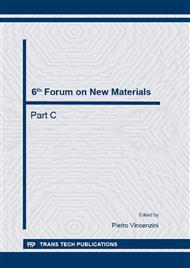p.150
p.156
p.162
p.169
p.175
p.181
p.186
p.196
p.202
High Critical Currents in Single Grain YBa2Cu3Oy Bulk Superconductors Produced by Infiltration-Growth
Abstract:
Bulk YBa2Cu3Oy “Y-123” superconductors with high critical current density (Jc) have been grown by infiltrating a Ba3Cu5Oy “Y-035” liquid source into a Y2BaCuO5 “Y-211” precursor block. Magnetization measurements showed that similar Tc (onset) values and large variation in self-field critical currents were observed when the samples were isothermally grown at different temperatures. We then adapted slow cooling process for the samples 27 mm in diameter and 5 mm in thickness using the growth profile which was optimized on the basis of isothermal growth conditions. The specimens cut from various locations of a large bulk material showed the uniform and sharp superconducting transition with Tc (onset) around 93.2 K. Jc values at 77 K and 0T was in the range of 150 - 175 kA/cm2. Such high Jc values could be obtained without refining the particle size of Y-211 secondary phase. Atomic force microscopy measurements revealed that uniform nanosized secondary Y-211 particles are embedded in the Y-123 matrix, which led to a dramatic improvement of the critical current performance at 77 K.
Info:
Periodical:
Pages:
181-185
Citation:
Online since:
October 2014
Price:
Сopyright:
© 2014 Trans Tech Publications Ltd. All Rights Reserved
Share:
Citation:



